The satisfaction felt by homeowners when they look out their windows and see their lawns covered in thick, emerald grass is indescribable. Not only can these lovely grasses improve the appearance of the house, but they help keep the surrounding ground free of weeds.
That is where lawn fertilizers come in! Fertilizing is an essential part of maintaining a healthy lawn since it affects the color of the grass, increases the grass’s resilience to stress, and helps prevent the spread of disease and weeds. In this article, let’s talk about the best lawn fertilizer ratio.
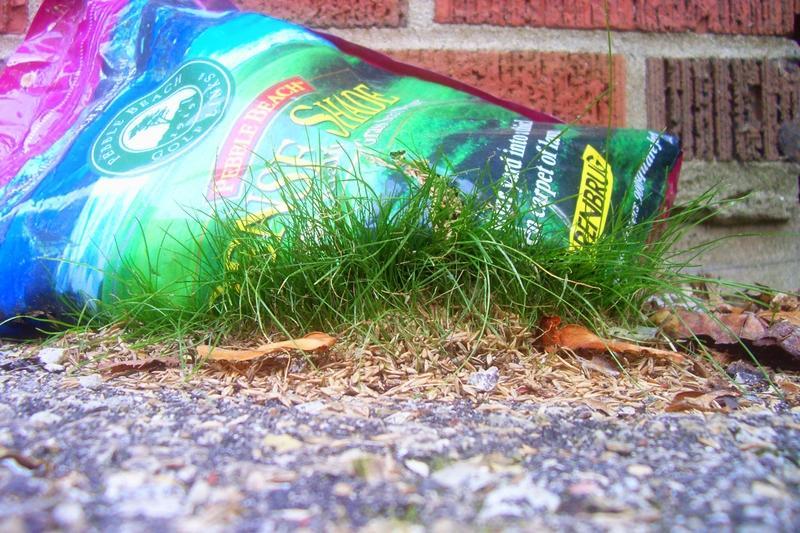
The ideal nitrogen, phosphorus, and potassium ratio for most lawns is 4-1-2 to 10-1-2.
For healthy growth, grass needs at least 18 nutrients, most of which are adequately provided by the soil. However, the three main macronutrients of nitrogen, phosphorus, and potassium are noteworthy exceptions to this rule. Grass requires these nutrients in far higher concentrations than are often found in the soil. Different lawns need different ratios of these nutrients and different types of fertilizer for different situations.
Your lawn is one of a kind; thus, conducting a soil test with a reliable soil test kit is the most effective way to determine precisely what your grass needs. A soil test will also tell you the NPK ratio of the fertilizer that you should apply to bring out your lawn’s full potential. Most lawns, however, do great with an NPK ratio of 3:1:3 or 4:1:2.
That said, there is much more to lawn fertilization and N-P-K ratios.
Continue reading to find out!
Understanding Fertilizer Labels

Each fertilizer label has three numbers above or below the product name that represent the N-P-K ratio.
Lawns primarily require nitrogen (N), phosphorus (P), and potassium (K). When you look at a fertilizer bag, the first number you see is the nitrogen content expressed as a percentage (by weight). Following that, you will see the numbers for phosphate and potassium.
When selecting fertilizers, one more label you might come across is the type of nitrogen contained within the product. Nitrogen is by far the most needed nutrient for grass growth, and it is usually (but not always) the most important of the main three.
However, it does not mean that your grass always needs nitrogen, and you can keep throwing bags and bags of nitrogen fertilizer on your grass. When there is excess nitrogen, it can result in excessive top growth, which can lead to a variety of other grass problems.
Nevertheless, nitrogen fertilizer can be either fast-release or controlled/slow-release.
When it comes to applying fertilizer to the lawn, the standard recommendation is to do it at a rate of one pound of nitrogen per one thousand square feet.
You can determine the area of your lawn using one of these online tools and then apply the correct quantity of nitrogen to your yard.
In most cases, the nitrogen ratio in lawn fertilizer should be between three and four times higher than the phosphorus. In contrast, the potassium content should be around half that of the nitrogen in a good grass fertilizer.
In terms of ratio, 3-1-2 or 4-1-2 is generally deemed best for most lawn purposes.
Now, look at the NPK ratio and nitrogen release speed in more detail.
Related: How to Read Fertilizer Numbers? What Is The NPK Ratio? A Comprehensive Guide
Fast or Quick-Release Fertilizer

Lowe’sLilly Miller (16-16-16) All-purpose Fertilizer: Our favorite fast-release fertilizer
When you want to see results right away, you should use a fertilizer with a fast-release formula as it releases its nutrients very quickly. Fast-release fertilizers typically come in the form of liquid or granules that, before application, must be diluted with water.
And that’s why you’ll see results on your grass right away. However, you will need to apply a fast-release fertilizer quite frequently as its contents quickly dissipate into the soil.
Experts, however, usually do not recommend using a quick-release fertilizer on a frequent basis in your yard. It is because, due to its fast-release formula, it can sometimes cause damage to the grass and the environment.
For instance, due to the speed with which its nutrients are released, there is a risk that they will sometimes seep into the ground and contaminate the water supply. Moreover, a quick-release fertilizer can also cause grass burns due to its rapid release.
Nevertheless, a fast-release fertilizer is the way to go if you want quick results and can afford to use it sparingly.
Slow or Controlled Release Fertilizers

Milorganite is a slow-release nitrogen fertilizer that is also very eco-friendly.
The effects of a slow-release fertilizer take longer to appear. However, slow-release fertilizer is effective for a more extended period of time.
So, if you have the time and patience to wait before seeing results, slow-release fertilizers are an excellent choice for your garden over the long run.
Since slow-release fertilizers release their nutrients slowly over time, you can limit the frequency with which you must apply fertilizer to your lawn, saving time and money.
Also, the nutrients in a slow-release fertilizer are less likely to seep into groundwater or surface water, making it more environmentally friendly.
Slow-release fertilizers usually come in the form of pellets or granules. Compared to liquid and powder, granules break away slowly, making their effects long-lasting.
Related: The Best Time Of Day To Fertilize Your Lawn | A Comprehensive Guide
Slow Vs. Fast Release Fertilizers
| Nitrogen Type | Pros | Cons |
| Controlled-Release(slow-release)examples:– sulfur-coated urea– ureaform | More consistent grass growth.Reduced soil and air losses.Unlikely to burn the grass. | Most are pricey.Not likely to work in cold soil.The grass may not green quickly. |
| Fast-Release(Quick release)examples:– ammonium sulfate– ammonium nitrate | Provide nitrogen when the soil is cold.It is reasonably priced.Swift action (grass greening). | Likely to burn the grass.Losses via soil or air are more likely.It produces an undesired big growth spurt. |
Why Do Lawns Need Nitrogen?
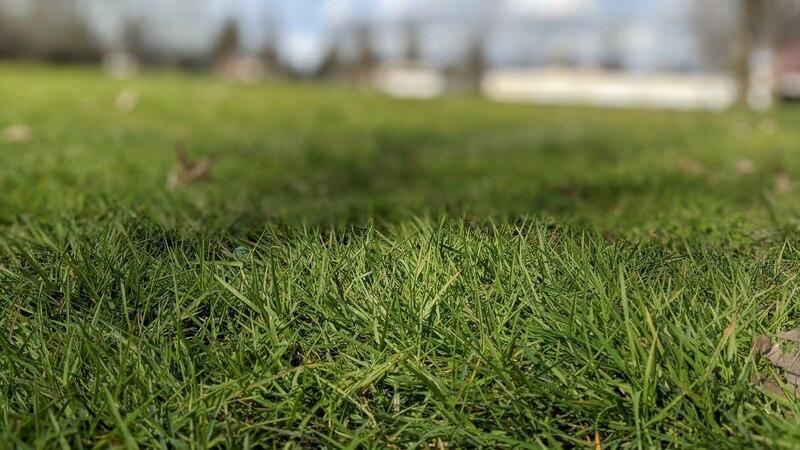
Nitrogen aids in the production of proteins required for the growth of grass cells.
Nitrogen encourages the growth of longer shoots and healthier leaves in plants. Therefore, in order to maintain their health and vitality, green leafy vegetables and grass will benefit from the presence of an adequate amount of nitrogen in the formula.
In addition, your grass needs nitrogen to produce chlorophyll, which is a component that is vital for the process of photosynthesis.
Signs Of Nitrogen Deficiency
In turfgrass, a lack of nitrogen is by far the most frequently seen nutritional shortage. When turfgrass lacks nitrogen, the grass becomes yellow and has less vigor.
A lack of tillering, rhizome or stolon formation, and slow growth are more common symptoms of nitrogen deficiency in forage grasses.
Other symptoms of a nitrogen deficiency include grass growing in thin spots, acceleration in the growth of weeds, and reduced grass clippings when the grass is mowed.
Why Do Lawns Need Phosphorus?
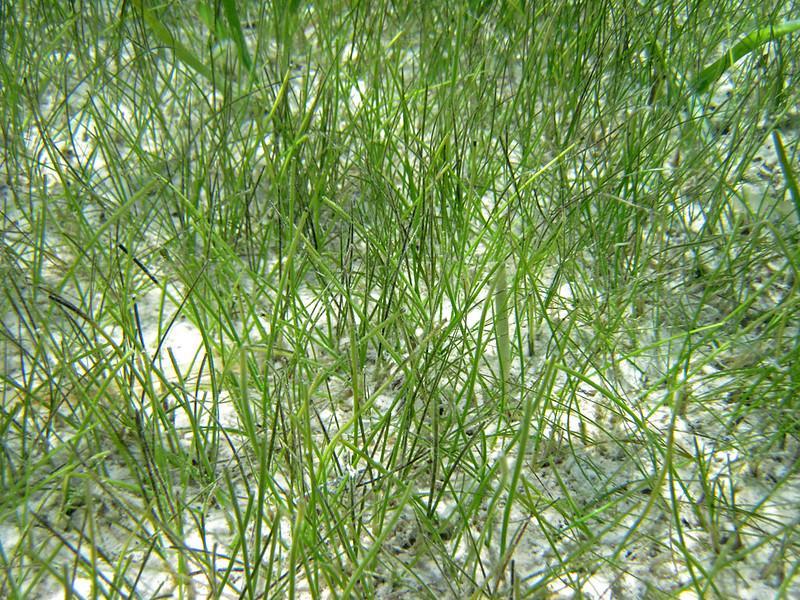
A certain amount of phosphorus in your lawn is required for root and early plant development.
Phosphorus, which is available in various fertilizers, supports healthy root growth. It is very important for early grass development, and a shortage of phosphorus may be the reason you are having difficulty growing a lawn.
Phosphorus plays an essential role in the grass by acting as a catalyst for a number of different reactions which are critical to the health of a lawn.
Related: How To Correctly Use Potash On A Lawn For The Best Results?
Signs Of Phosphorus Deficiency
When the roots of the grass are strong and healthy, they can absorb nutrients more efficiently and continue to produce robust growth.
That is why, even in established lawns, phosphorus remains crucial.
The first symptom of a phosphorus deficiency is a decrease in vigor and grass growth rate. Visually, the grass might look dark green, but the area won’t give the impression that it’s expanding as rapidly as you’d hoped.
Another common phosphorus (P) shortage leaf symptom is the emergence of dark green color on grass blades, which eventually advances to a purplish to reddish-purple color.
Why Do Lawns Need Potassium?
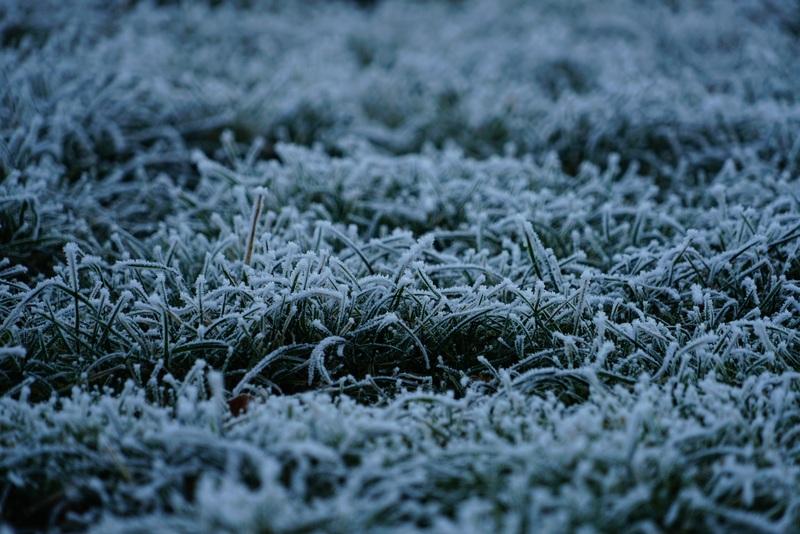
The grass can tolerate stresses, including cold, heat, disease, and drought, with potassium.
Potassium, along with nitrogen and phosphorus, is one of the fundamental macronutrients plants require in the greatest quantities for growth and vigor. The grass also requires potassium in order to properly regulate its physiological processes.
With potassium, your grass can build thicker cell walls and will remain robust and healthy all year long. Potassium in the soil can be absorbed in more significant amounts than are necessary for optimum growth because it is mobile in plants.
Signs Of Potassium Deficiency
If your grass does not receive enough potassium, the stems and roots will not develop to their full potential. Potassium is necessary for photosynthesis in leaves, and it also assists with the plant’s ability to absorb water; hence, a deficiency in potassium might cause the grass to turn brown or stunt its growth.
Potassium deficient grass also has a decreased resilience under difficult weather conditions. Moreover, potassium-deficient grass is more likely to show signs of stress, including chlorosis (yellowing of leaves).
This may ultimately result in the defoliation and shedding of the plant. Other common signs of potassium shortage in plants include brown blistering and leaf tip curling.
Types Of Fertilizer For Different Conditions
Depending on the season, soil type, and grass condition, you might need different fertilizers on your lawn with varying N-P-K ratios. For example, if you want to apply fertilizer in the fall, it is typically better to use a winterized fertilizer that is high in potassium.
Likewise, using fertilizer products high in phosphorus is recommended while establishing a new lawn. Let’s talk about it in a bit more detail.
Best Fertilizer For Fall
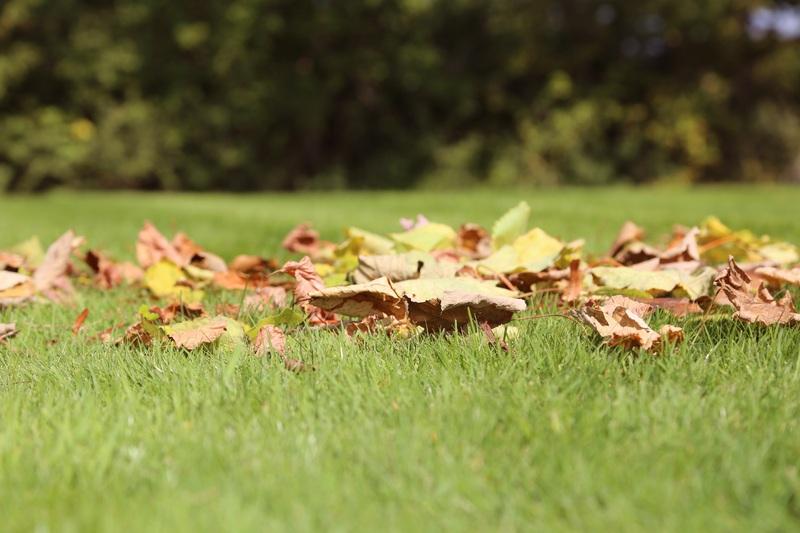
When fertilizing your lawn in the fall, use a fertilizer with a lower nitrogen ratio.
The goal of fertilizing your grass in the fall is to guarantee that it is robust enough to endure harsh winter conditions. However, fall is the time of year when you should refrain from fertilizing your warm-season grasses.
I mean, the last thing you want is for fertilizer to stimulate grass growth when the temps are too cold for the grass to grow and it is attempting to go into dormancy.
Also, while fertilizing cool-season grasses in the fall, the most important thing to keep in mind is to use a fertilizer with a lower nitrogen ratio.
Using a higher nitrogen ratio fertilizer can cause stress to the lawn, which may result in bare patches appearing on your turf. Overall, the best fertilizer number to put on your lawn (cool-season grasses) in the fall is 6-0-0.
Best Fertilizer For Summer
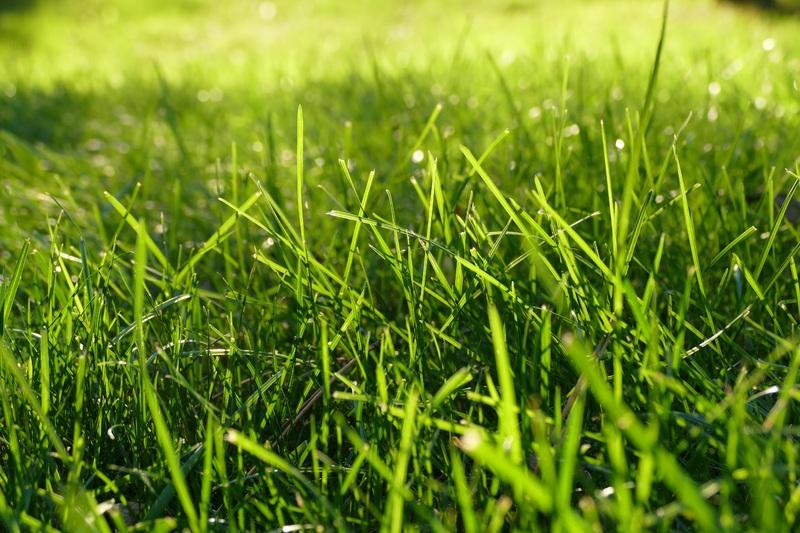
Do not fertilize cool-season grasses during or at the start of summer.
Try avoiding fertilizing cool-season grasses in the summer just like we suggested you avoid fertilizing your warm-season grasses in the winter. Every grass type has an internal growth cycle, and pushing it to grow outside the cycle can put it under stress.
In addition, when fertilizing during summer, you will need to be careful to use a fertilizer that is less harsh and has a formulation that allows for a delayed release of nutrients.
Fertilizing your lawn incorrectly or with an improper mixture can swiftly burn or kill your summer grass. Typical ratios of summer grass fertilizer are 6-0-0, 15-0-8, and 10-0-4.
Best Fertilizer For Spring
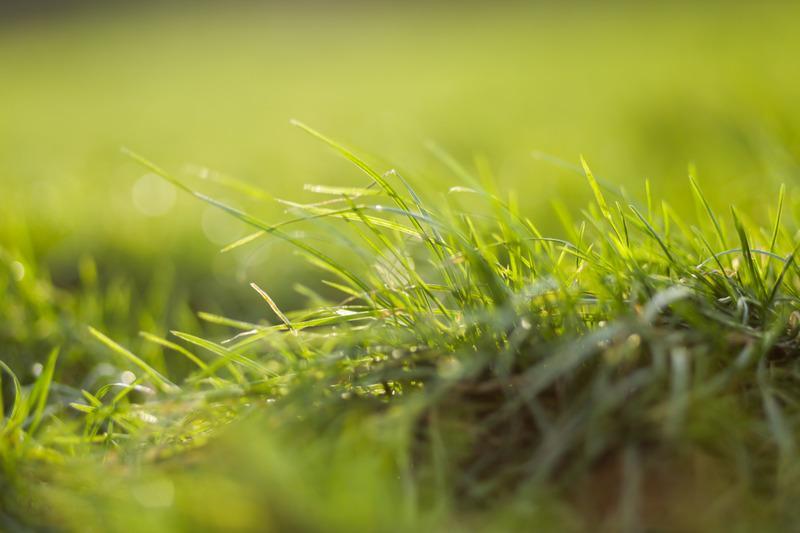
For spring fertilization of your lawn, use a fertilizer with a high nitrogen ratio.
The best fertilizer to apply on your lawn in the spring is often one with a higher nitrogen concentration. When your turf is just starting to spread out in the early spring, using a nitrogen fertilizer will help it grow stronger.
Some of the best fertilizer ratios for spring turf are 15-0-6, 20-0-5, 30-0-3, and 35-0-5. We often suggest beginning with the 20-0-5 since a nitrogen content of 20 percent is generally considered to be safe.
Using too much nitrogen in your fertilizer might harm your grass and cause long-term problems. The reason why you see zero for phosphorus is that many places have strict regulations in place for the use of phosphorus on lawns.
If your lawn needs phosphorus, do a soil test and confirm with the local extension office before using a phosphorus fertilizer on your lawn.
Best Fertilizer Depending On Lawn Type
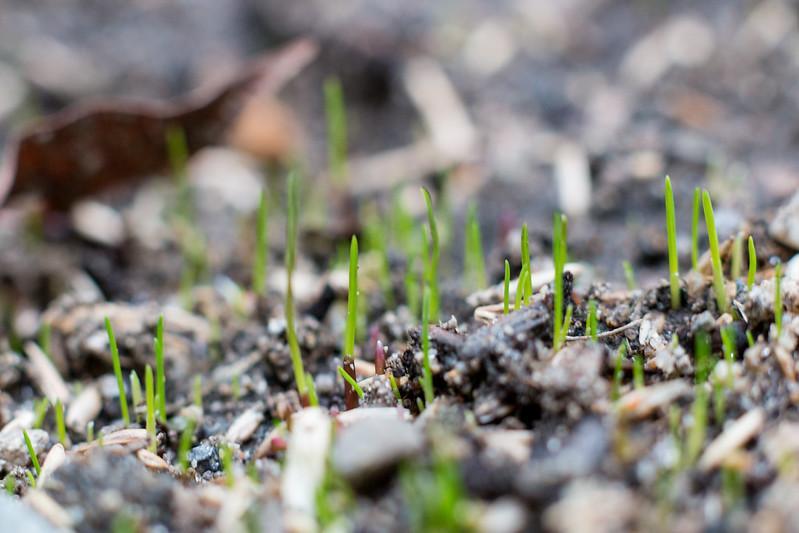
If you are establishing a new lawn from seed, use a fertilizer with a high phosphorus ratio.
If you take a look at the table that is provided below, you should be able to get an idea of which aspects of N-P-K must be prioritized while tackling various projects involving the management of lawn grass.
| Lawn Type | Purpose of Fertilization | N | P | K |
| New Lawn | To encourage more robust root development. | L | H | L |
| New Sod | To make freshly formed roots stronger. | L | H | H |
| Established Lawn | To enhance the uniformity and growth of leaves. | H | L | L |
| Damaged Lawn | To repair bald spots and damaged grass. | H | L | H |
N = nitrogen, P = phosphorus, K = potassium, H = high and L = low
In Any Case, Get A Soil Test!
It would help if you had your soil tested to determine its pH level and whether or not it is missing any nutrients. You will gain a better understanding of the type of fertilizer that is most suited for your soil if you test your soil. If you discover that your lawn lacks one or more micronutrients or macronutrients, apply fertilizer to assist you in fixing the problem and produce a nutrient-rich environment for your grass to grow.
Tips For Fertilizing Your Lawn
Having access to the ideal combination of nitrogen, phosphorus, and potassium in fertilizer is only half the battle won. The efficiency of these fertilizers depends on how you use them in your garden. To get the most out of a product that has the best ratio of lawn fertilizer, consider the following advice:
- There’s a reason fertilizer companies place a label on fertilizer bags. Following their directions and ensuring that the ratio is appropriate for your grass type can provide you with a beautiful lawn for many years.
- The ideal time to apply fertilizer in the correct proportions to a lawn is when the grass is actively growing, as this maximizes the benefits of the fertilizer. This is because extra nutrients are needed during this time.
- Some fertilizers are formulated to give the ground advantage in the battle against weeds before the weeds even appear. These types of fertilizers must be used in accordance with the specific instructions provided.
- Some fertilizers (lawn starter foods) are only intended for the early development phases of lawn grass. Be it seeds, sod, or plugs. Using these fertilizers after your garden has already grown a lot of grass will not assist.
Frequently Asked Questions
What fertilizer ratio is best for grass?
Generally, the best N-P-K nutrition ratios for lawn fertilizers are 3:1:2 or 4:1:2. The figures, however, can change based on the type of grass, the season, the soil, and the state of the lawn. In addition, it is highly recommended that you have a soil test done in order to figure out just what it is that your lawn requires.
What is the best ratio for summer lawn fertilizer?
We advise beginning summer fertilization with the 20-0-5 formula since its 20 percent nitrogen is often considered a safe starting point for most lawns. When combined with the searing heat of the summer sun, using a fertilizer that contains an excessive amount of nitrogen can damage or even cause the death of your grass.
Can you use too much 10-10-10 fertilizer?
If you apply too much 10-10-10 fertilizer in your garden, you risk harming your plants and the environment. If you fertilize your garden too heavily, you will notice that the plants begin to wilt, that the leaves and lawns suffer from burned spots, and that the soil develops a white crust that resembles a layer of salt.
How often should I fertilize my lawn?
In most cases, fertilizing your grass merely twice a year should be sufficient (and avoid over-fertilization). On the other hand, if you are using organic fertilizer, I advise fertilizing your lawn four times a year. You can change this frequency, though, depending on the circumstances. Just make sure not to over-fertilize your yard.
Is it OK to fertilize wet grass?
Yes, you can fertilize wet grass, and doing so can even make the fertilizer work better. However, organic or otherwise, no fertilizer should be applied to saturated ground. If the soil is damp and spongy, the fertilizer will run off or leech too deeply for the grass roots to absorb.
Sources For Further Reading
How to Calculate a Fertilizer Ratio – The Pennsylvania State University Extension Service
Choosing Fertilizers for Home Lawns – University of Illinois Extension Extension Service
The ABCs of NPK: A fertilizer guide – Oregon State University Extension Service
Editor’s Recommendations
How To Fix A Patchy Lawn? Steps, Tips & Tools Needed | A Comprehensive Guide
How Cold Is Too Cold For Grass Seeds? A Comprehensive Guide
Water Trough Gardening: Is It The Right Choice For You? A Comprehensive Guide







